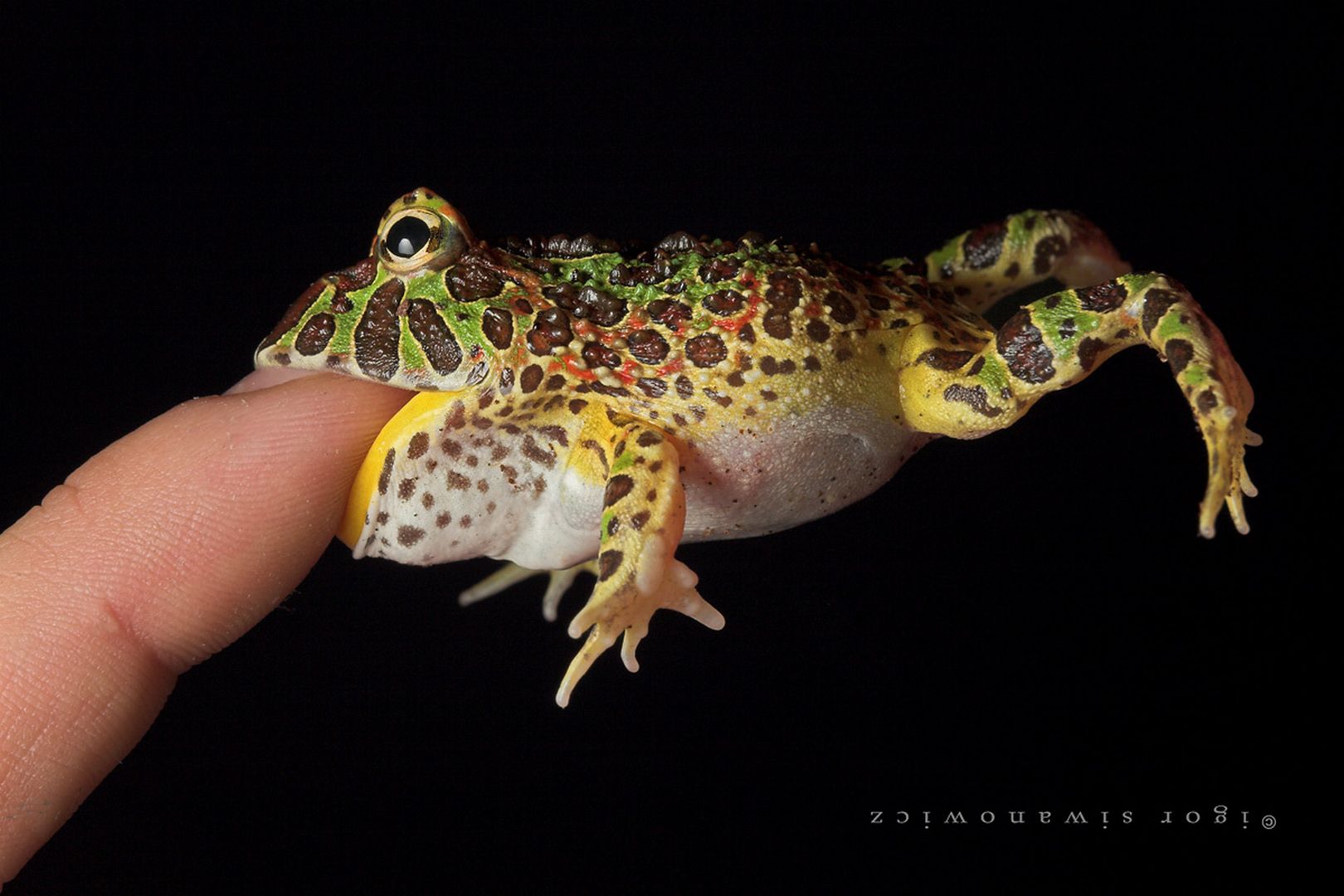Scientists Conclude Prehistoric Frog Ate Small Dinosaurs
Frogs and toads are not particularly fearsome animals to humans. Barring some poisonous species (and even a couple venomous ones!) they just don't really possess the weaponry to be much of a threat to a person. Most of them have fairly weak jaws as they feed largely on soft-bodied creatures and insects; if one were to bite you, it wouldn't really do much damage if any at all. The big exception to this is the horned frog; these big guys are nasty when it comes to their disposition and power. Often called "Pacman Frogs" due to their insatiable appetite, these frogs will ambush and eat animals as large as themselves, including other frogs snakes and rodents.
The horned frog, as large and vicious as it is, is nothing compared to its ancient ancestor Beelzebufo, the Devil toad (I briefly covered this animal in a previous post). This amphibian was the largest frog to have ever existed on Earth, and it closely resembled the horned frog in appearance and, presumably, aggression. Although they only grew to about 16 inches, many paleontologists have hypothesized that the great frog may have been capable of taking down some of the smallest dinosaurs it shared a habitat with!
Dr. Marc Jones, researcher at the University of Adelaide’s School of Biological Sciences, set out to determine whether or not this claim was possible. Using a special tool called a force transducer (pictured below), he calculated the bite force of the modern day horned frog. The species tested, the Cranwell's Horned frog (Ceratophrys cranwelli), has a head that is around 4.15 cm wide (most of that being the mouth) and exerted a force of approximately 30 newtons (or 3 kg).
The head of the ancient Beelzebufo was around 11.1 cm wide and, based on the calculations of modern horned frogs, is estimated to have exerted a force between 500 and 2200 newtons. For reference, that force is comparable to modern wolves and tigers! This 16 inch amphibian had the bite force of a large mammalian carnivore!
“At this bite force, Beelzebufo would have been capable of subduing the small and juvenile dinosaurs that shared its environment.” -Dr. Jones Source
Biologists now firmly believe that the prehistoric frog did likely feed on dinosaurs, and perhaps other juvenile reptiles like archosaurs (crocodile relatives). Armed with their shockingly strong bite and an adhesive tongue, once the Devil Toad set its sights on a meal, there was little hope for its prey!
Article Link: http://www.reptilesmagazine.com/





You know, this just proves that scientists, especially biologists, are weird and have too much time.
LOL I really cannot contest that point! But as weird as it is, this is important info. By determining bite forces of prehistoric animals, we can better depict what ancient food webs and species interactions looked like. Through the madness of that web of life, we can better understand how modern species, including human beings, evolved thanks to those bizarre early interactions! So, yes, this is probably driven by an odd curiosity and bizarre fascination, but it is applicable!
Biologists can't explore a significant portion of the world. The depths of oceans are still unexplored. Antarctica's hostile environment prevents them from launching extensive research initiatives on the continent. So, they have a lot of time to research on history of evolution.
Until they find a way to survive the other stuff
I guess that is well possible, also since some dinosaurs were not bigger than a black bird. And even the bigger dinosaurs started off pretty small.

Another thing is, that frogs are not very careful in what they attack. Their motto is: "If it moves, try to eat it."
Which can sometimes lead to being a little overambituos:
How small will the dinosaur have been to be able to fit into the mouth of a frog?
I didn't live through history, but we've been made to believe that dinosaurs were huge (even their babies). Science keep getting better.
I remember reading an article of the fossil of a giant frog-like creature discovered. Can't remember where and when though
We are talking hatchling dinosaurs and maybe some of the smaller species. You are correct, when the word dinosaur is mentioned, we tend to imagine gigantic animals. But dinosaurs filled a huge variety of ecological niches; while there were many gargantuan giants, there were also a large number of dinosaurs that were very small, even as adults. Compsognathus (the "compy" of the Jurassic Park films) was only about the size of a crow as an adult; the iconic velociraptor was smaller than a modern turkey. It would have been very easy for a large frog with a massive bite force to feed on the offspring or juveniles of these species. Since there are modern frogs that will occasionally eat birds, it's not unreasonable to imagine one eating a small bird-sized dinosaur.
Thanks a lot for the quick lecture. It was quite expository
I'm sure it was a small oversight to leave out that these horned frogs evolved into paid Bud-weis-er spokesmen as seen in this Super Bowl commercial with jealous chameleons as their enemies. Funny blast from the past from Youtube.
This is a very strange fact. Never would I imagine a frog eating a dinosaur however small it this. This world is full of weird facts.
Very interesting pictures, the first picture looks very dangerous frog I'm sure he can do a lot of damage. I haven't seen a horned frog in a long time OMG
This post was very informative thank you for sharing
you have my upvote plus a resteem
@mannyfig1956
Very good content!
A frog eating a dino, even a small one, is something I really wish I could see. Someone please make a time machine!
Beezlebufo. Beezlebufo. Beezle -
Not summoning him!
more reason to be grateful that we live in present day.